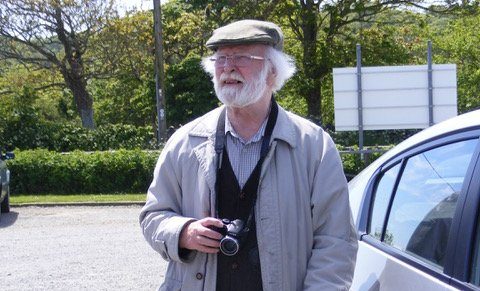Obituary | Alan Smith, 1925-2020
A curator whose curiosity and professionalism had a lasting impact on the sector

With the passing of Alan Smith, who has died at the age of 94, an era of museum curatorship seems to have come to a close.
Alan was born in Oswaldwistle, in Lancashire, in 1925, and following eight years as an art teacher at Stand Grammar School for Boys in Whitefield, he joined the Manchester City Education Service at the Athenaeum annexe of Manchester City Art Galleries.
Such a move into the museum world from a teaching post was not, at that time, unusual. It was an inspired appointment, as Alan’s burgeoning interest in horology and curiosity in the visual arts, combined with his acquisition of workshop skills, found an outlet at the Athenaeum – a pioneering concept that brought students into contact with the wealth of the city’s collections, enhanced by imaginative teaching.
In 1963, he moved to Liverpool City Museum, as keeper of ceramics and applied art. Tom Hume, the newly appointed director, was re-establishing the museum following its postwar reconstruction as a result of bomb damage, and replacing the temporary galleries installed by Elaine Tankard, the retiring keeper.
Alan applied himself with indefatigable enthusiasm into every aspect of the museum’s regeneration, even employing his skills in photography and calligraphy. But it was his involvement with horology that made the greatest impact.
Alan made several notable acquisitions to the collections, including a Finney longcase clock and a Bond Regulator, creating a splendid Time Gallery. He also built up a vast collection from clock and watch workshops, from the historically important Lancashire industry and elsewhere.
His contribution to the ceramic collection was equably valuable and remarkable. Alan pursued information about Liverpool’s historically important pottery industry, building on the work of Peter Entwistle and Knowles Boney, consulting with ceramic historians and adding significant items to the collections.
He published widely on the subject and, with Hume’s support, pursued the hitherto neglected subject of Liverpool’s Herculaneum Pottery factory, unearthing several documentary sources and in 1970 producing a pioneering work, The Illustrated Guide to the Liverpool Herculaneum Pottery.
Alan’s contribution to the Liverpool Museum remains of lasting significance.
Alan was appointed senior lecturer at the University of Manchester’s school of museum studies in 1971. Others can speak more knowledgeably about his time there, but from my occasional visits to the school, I can testify to its heightened professionalism and the vigour, so characteristic of Alan, with which it was pursued.
In 1980, he was appointed Granada professor of art and industry at the University of Salford: another pioneering post, promoting knowledge of material culture among university graduates. The knowledge and care with which Alan cultivated this demanding subject to his students was evident to me when serving on his behalf as an external examiner.
During the 50 years that I knew Alan, it was always a pleasure to be in his company. He had an unfailing interest and curiosity in any subject that came up, and his conversation was always rewarding. He led a fulfilled and rewarding life.
His friends treasured his Christmas cards, printed on the handpress in his Worsley home, decorated with his engravings and enhanced with poems by his wife Deidre, who predeceased him.
He is survived by his son Mark, sisters Julia and Helen, and their families.
Comments (1)
Leave a comment
You must be signed in to post a comment.
Author of the Connoisseur Guide to Clocks and Watches and editor of the Country Life International Dictionary of Clocks, Alan wrote brilliantly on horology – as well as being no less passionate about ceramics and many aspects of art and technology. He was a maker, historian and an outstanding teacher.